OZOC - MODA Outlet Bupyeong Branch [Tax Refund Shop] (오조크 모다아울렛 부평점)
14.7Km 2024-06-28
2F, 35, Bupyeongmunhwa-ro, Bupyeong-gu, Incheon
-
Renoma - MODA Outlet Bupyeong Branch [Tax Refund Shop] (레노마 정장 모다아울렛 부평점)
14.7Km 2024-06-27
4F, 35, Bupyeongmunhwa-ro, Bupyeong-gu, Incheon
-
Gaehwaok (개화옥)
14.7Km 2019-08-05
7, Apgujeong-ro 50-gil, Gangnam-gu, Seoul
+82-2-549-1459
This restaurant specializes in tasty bulgogi served in an attractive atmosphere. Lightly spiced, and a high-grade beef, bulgogi is cooked on a Korean-style brazier for optimum temperature and taste. Also famous are bossam, consisting of sliced pork and kimchi, and spicy beef and vegetable salad. A delicious meal goes well with a selection of over 50 name value wines for an affordable price.
Ramada Seoul (호텔 라마다 서울)
14.7Km 2021-06-07
410, Bongeunsa-ro, Gangnam-gu, Seoul
+82-2-6202-2000
Ramada Seoul, opened in February, 2004, is located in Samseong-dong, Gangnam, one of the main business districts in Seoul. The hotel (B3-12F) offers a range of convenient facilities including meeting rooms of various sizes, a spa & sauna, a fitness club, restaurants, and a banquet room. Conveniently located across from Seolleung Park, guests can easily take a morning jog or walk along the park paths.
Changdeokgung Palace Complex [UNESCO World Heritage Site] (창덕궁과 후원 [유네스코 세계유산])
14.7Km 2025-07-21
99 Yulgok-ro, Jongno-gu, Seoul
Changdeokgung Palace was the second royal villa built following the construction of Gyeongbokgung Palace in 1405. It was the principal palace for many kings of the Joseon dynasty, and is the most well-preserved of the five remaining royal Joseon palaces. The palace grounds are comprised of a public palace area, a royal family residence building, and the rear garden. Known as a place of rest for the kings, the rear garden boasts a gigantic tree that is over 300 years old, a small pond and a pavilion.
The palace gained importance starting from the time of Seongjong, the 9th king of Joseon, when a number of kings began using it as a place of residence. Unfortunately, the palace was burned down by angry citizens in 1592 when the royal family fled their abode during the Imjin War. Thanks to Gwanghaegun, the palace was restored in 1611. Even today, it houses a number of cultural treasures, such as Injeongjeon Hall, Daejojeon Hall, Seonjeongjeon Hall, and Nakseonjae Hall.
Changdeokgung Palace’s garden behind the inner hall, called the "Secret Garden," was constructed during the reign of King Taejong and served as a rest area for the royal family members. The garden had formerly been called Bugwon and Geumwon, but was renamed Biwon Garden, or Secret Garden, after King Gojong came into power. The garden was kept as natural as possible and was touched by human hands only when absolutely necessary. Buyongjeong Pavilion, Buyongji Pond, Juhamnu Pavilion, Eosumun Gate, Yeonghwadang Hall, Bullomun Gate, Aeryeonjeong Pavilion, and Yeongyeongdang Hall are some of the many attractions that occupy the garden. The most beautiful time to see the garden is during the fall when the autumn foliage is at its peak and the leaves have just started to fall.
Though it has been treasured by Koreans for centuries, Changdeokgung Palace and its complex was recognized as a World Cultural Heritage site by the UNESCO World Cultural Heritage Committee in December of 1997 during the committee meeting in Naples, Italy.
Jinokhwa Halmae Wonjo Dakhanmari (진옥화할매원조닭한마리)
14.7Km 2024-03-04
18 Jong-ro 40ga-gil, Jongno-gu, Seoul
+82-2-2275-9666
Jinokhwa Halmae Wonjo Dakhanmari is a renowned restaurant located in the alley of whole chicken soup near Dongdaemun Market, operating since 1978. Its specialty is dakhanmari (whole chicken soup), a whole chicken boiled in savory and rich broth. Adding finely chopped green onions enhances its refreshing flavor. The chewy rice cakes dipped in the seasoned sauce are also delightful. Additionally, it's customary to enjoy the remaining broth by mixing it with seasoning sauce and noodles, creating a delicious kalguksu (noodle soup).
Nunnamujip (눈나무집)
14.7Km 2020-06-16
136-1, Samcheong-ro, Jongno-gu, Seoul
+82-2-739-6742
Nunnamujip is famous for a North Korean dish called, “Kimchi mari guksu”, which is a noodle dish in cold kimchi soup containing toasted laver, a boiled egg, and sesame. The soup is refreshingly cold and a little spicy. For “Kimchi mari bap”, a bowl of rice is put into cold kimchi soup instead of noodles. The taste is very unique. In addition to Kimchimari, “Tteokgalbi” is a popular dish on the menu as well.
The main restaurant is located in the basement, which has only limited seating capacity with a few tables. As a result, many people usually wait in line for lunch or dinner. A second franchise has opened in a three-story building across the street. To enjoy a quaint atmosphere, the first establishment is better, but the new one’s interior design is much more modern and fancier, giving it a fresh altering look.
Carhartt WIP - Apgujeong Branch [Tax Refund Shop] (칼하트WIP 압구정)
14.7Km 2024-04-18
1F, 21, Apgujeong-ro 54-gil, Gangnam-gu, Seoul
-
Migliore - Dongdaemun Branch (밀리오레 (동대문점))
14.7Km 2020-05-12
263, Jangchungdan-ro, Jung-gu, Seoul
+82-2-3393-0293
Migliore is located in Dongdaemun, a shopping district that stretches from Jongno 5(o)-ga Station to Dongdaemun Subway Station. Migliore sells the latest fashion apparel targeted towards the younger generation, with customers in their teens making up 80% of the business. Migliore is a convenient shopping facility that has an enormous variety of products sold at reasonable prices.
Dongdaemun Dak Hanmari Alley (서울 동대문 닭한마리 골목)
14.7Km 2024-03-04
37-7, Jongno 5(o)-ga, Jongno-gu, Seoul
+82-2-2236-9135
Located near the Dongdaemun Market, Dongdaemun Dak Hanmari Alley gets its name from the restaurants serving dak hanmari (whole chicken soup) that line the alley. Dak hanmari (whole chicken soup), literally “one whole chicken” in Korean, is a dish where a whole chicken is boiled in a soup and served with the alley’s special sauce. After the diners eat the meat, the broth is used to make kalguksu (noodle soup). Because the area is home to large-scale apparel and fashion material markets of the Dongdaemun Market, the district is always lively and bustling.
![OZOC - MODA Outlet Bupyeong Branch [Tax Refund Shop] (오조크 모다아울렛 부평점)](http://tong.visitkorea.or.kr/cms/resource/20/3314520_image2_1.jpg)
![Renoma - MODA Outlet Bupyeong Branch [Tax Refund Shop] (레노마 정장 모다아울렛 부평점)](http://tong.visitkorea.or.kr/cms/resource/09/3314609_image2_1.jpg)
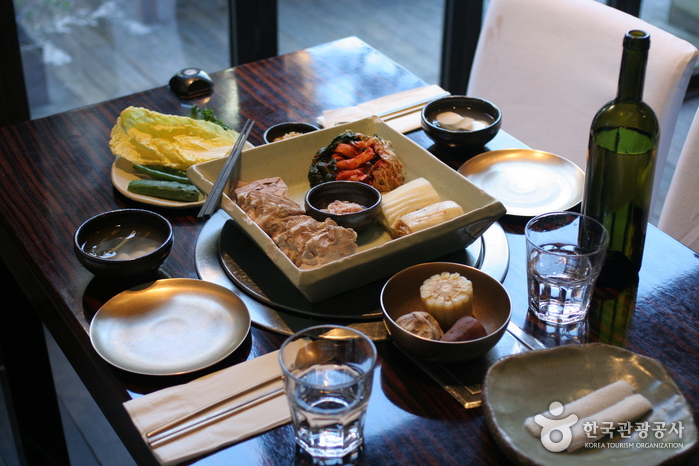

![Changdeokgung Palace Complex [UNESCO World Heritage Site] (창덕궁과 후원 [유네스코 세계유산])](http://tong.visitkorea.or.kr/cms/resource/03/3092503_image2_1.jpg)
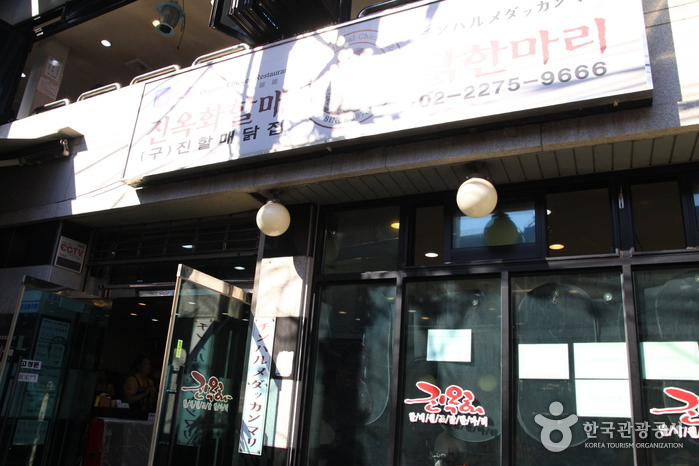
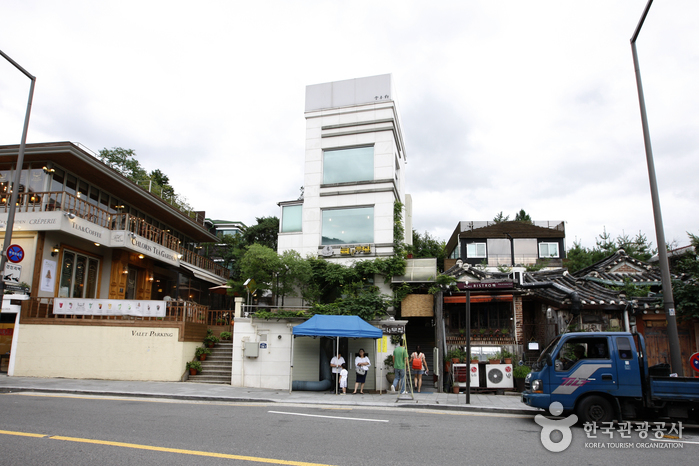
![Carhartt WIP - Apgujeong Branch [Tax Refund Shop] (칼하트WIP 압구정)](http://tong.visitkorea.or.kr/cms/resource/41/2879541_image2_1.jpg)
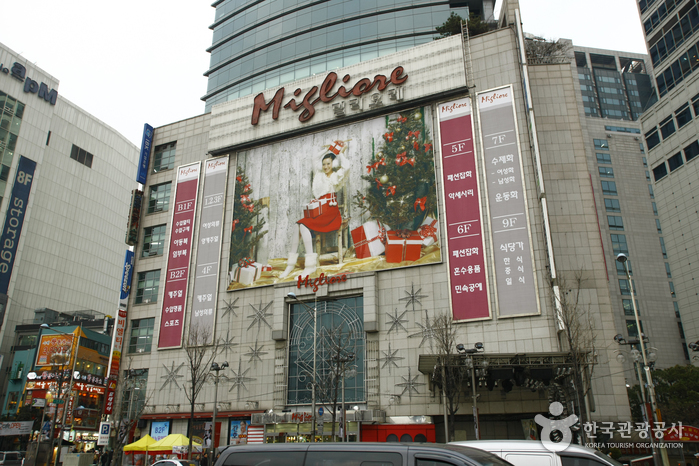
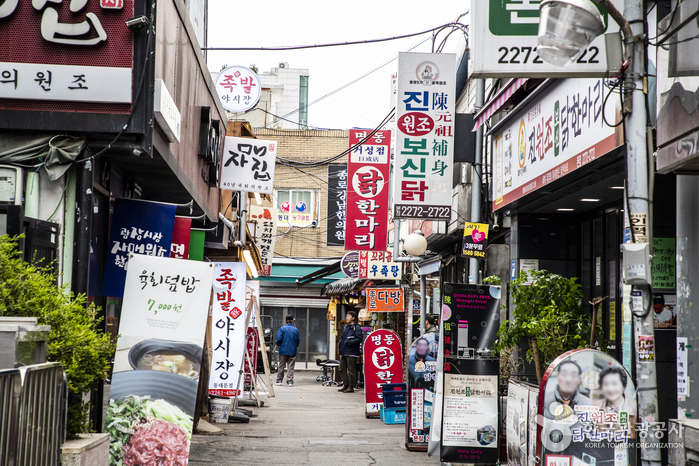
 English
English
 한국어
한국어 日本語
日本語 中文(简体)
中文(简体) Deutsch
Deutsch Français
Français Español
Español Русский
Русский